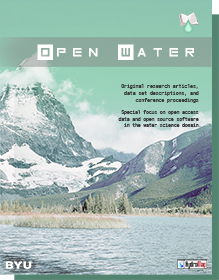Abstract
The Aba’ala spate irrigation systems, traditional and modern, have experienced different set of floodwater and sediment management problems. Despite the dire need of alternative spate irrigation system layout, operational strategy and locally maintainable structures, efforts made to manage floodwater and control sedimentation had been structural. Hence, the study was conducted to evaluate the existing flood and sediment management practices and identify alternative options for optimum management of floods and sediments in Aba’ala plain. Primary data including discharge, sediments and river cross-sections were collected through direct field measurement. Interviews and focal group discussions were also employed to understand the operational and maintenance activities. Delft3D model was used to simulate flow and sedimentation under different scenarios. For the existing condition, the model showed high sediment deposition and low flood water abstraction. The floodwater diverted is 2.1 and 1.16 Mm3 from the traditional intake and 1.52 and 0.51 Mm3 from the modern intake at medium and low floods respectively which is far below the required 2.8 Mm3 of water. Under Scenario-II, the modern intake diversion capacity is improved to 5.38 and 2.36 Mm3 at medium and low floods. However, a water level decline of 15 cm is observed at the downstream traditional intake which could be a cause for conflict between upstream and downstream users. Under Scenario-III, the diversion capacity of the modern intake is increased to 6.23 and 2.67 Mm3 at medium and low floods respectively. Moreover, no decline in water level is shown at the downstream intake.
BYU ScholarsArchive Citation
Gebrehiwot, K. A.; Haile, A. M.; de Fraiture, C. M. S.; Chukalla, A. D.; and Embaye, T. G.
(2015)
"Optimizing Flood and Sediment Management of Spate Irrigation in Aba’ala Plains,"
Open Water Journal: Vol. 3:
Iss.
1, Article 8.
Available at:
https://scholarsarchive.byu.edu/openwater/vol3/iss1/8
